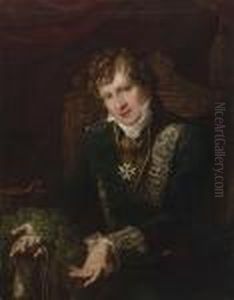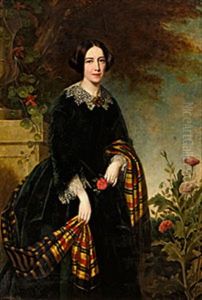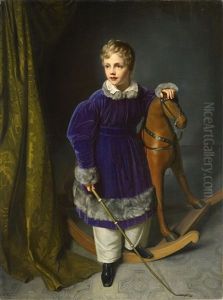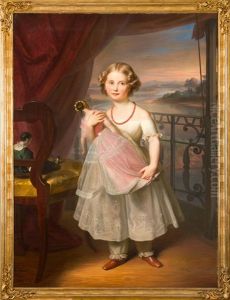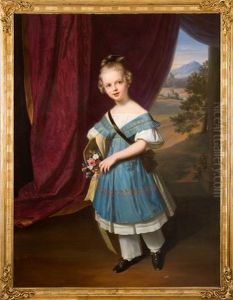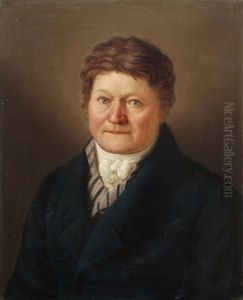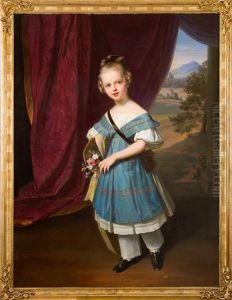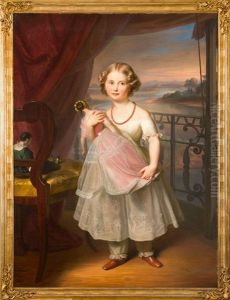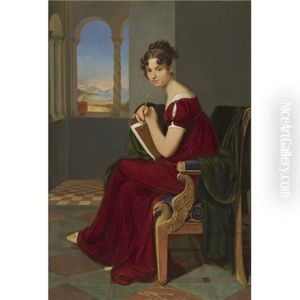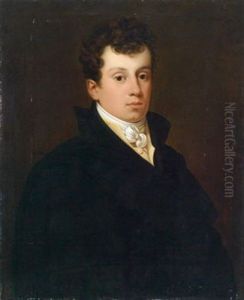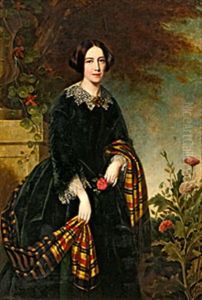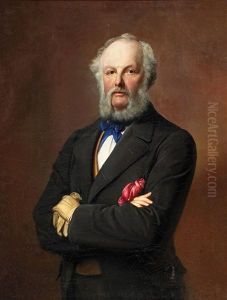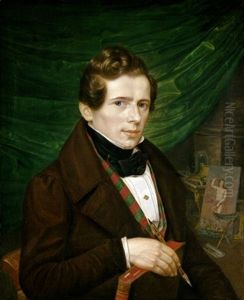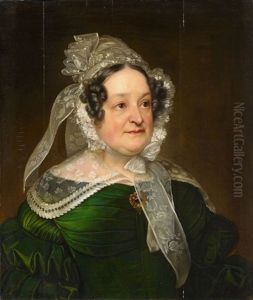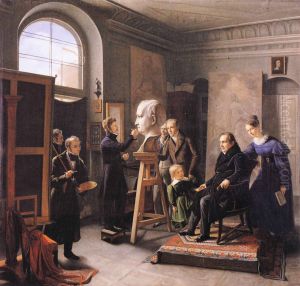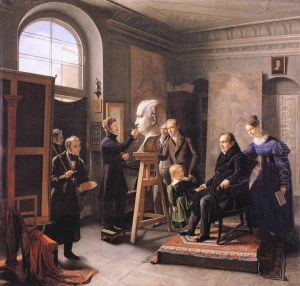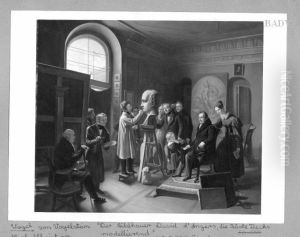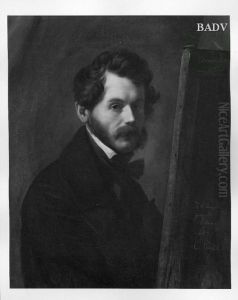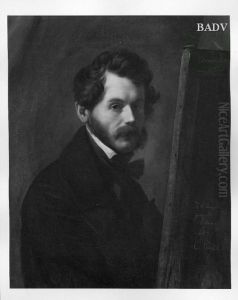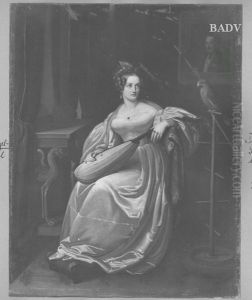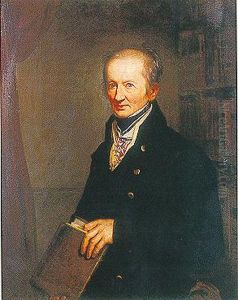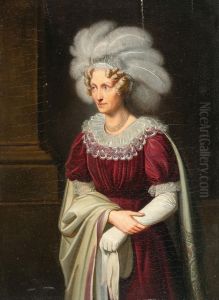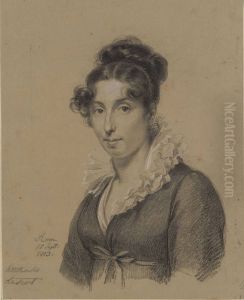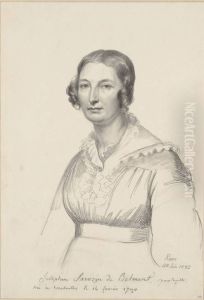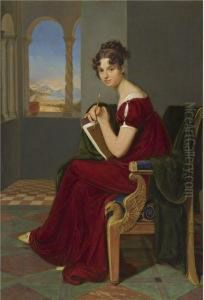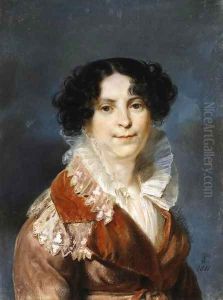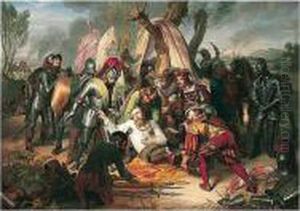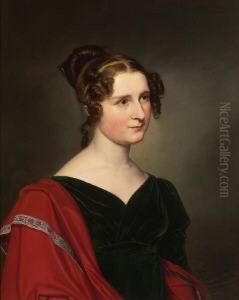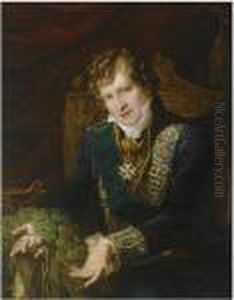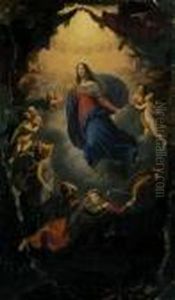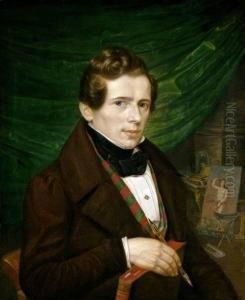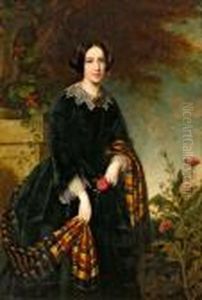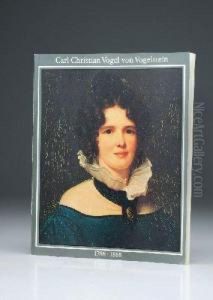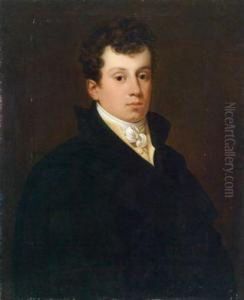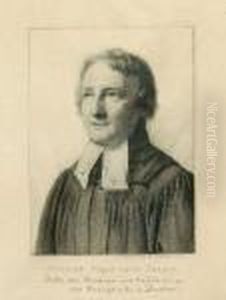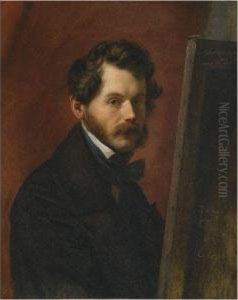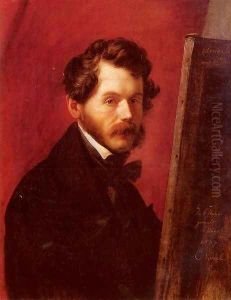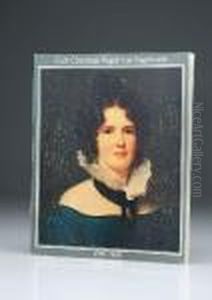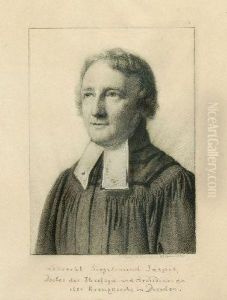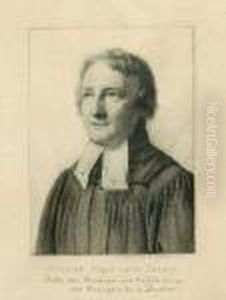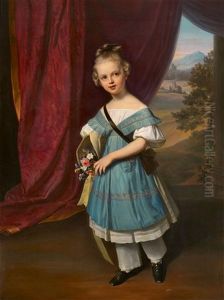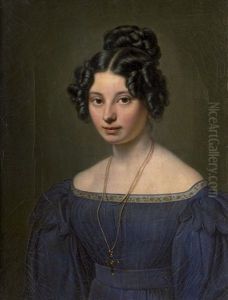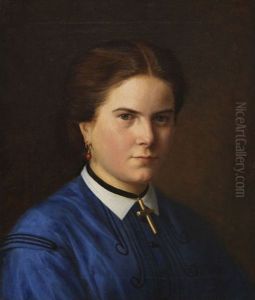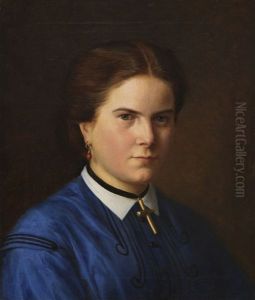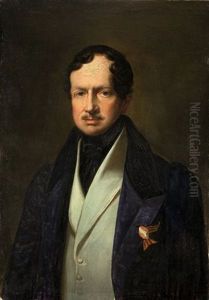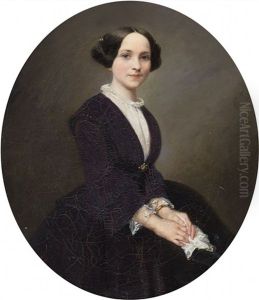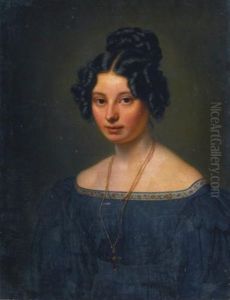Carl Christian Vogel von Vogelstein Paintings
Carl Christian Vogel von Vogelstein, born in 1788 in Wildenfels, Saxony, was a notable German painter associated with the Neoclassical and Romantic movements. He was the son of a painter and initially received his artistic education from his father. Vogel von Vogelstein's talent was evident at an early age, and he further honed his skills at the Dresden Academy of Fine Arts. His early works consisted primarily of portraits and religious subjects, which showcased his meticulous attention to detail and his ability to capture the psychological depth of his subjects.
Vogel von Vogelstein's career began to flourish when he moved to Italy in 1813. There, he became part of the vibrant artistic scene and was heavily influenced by the works of the Italian Renaissance and the masters of the Classical period. His style evolved to incorporate a more refined approach to composition and a heightened sense of realism. During his time in Italy, he produced some of his most renowned works, including portraits of prominent figures of his time. He gained a reputation for his exquisite portraits, which were characterized by their clarity, harmonious color palette, and subtle rendering of light and shade.
In 1820, he was appointed a professor at the Academy of Fine Arts in Dresden, a position he held until 1853. His teaching and artistic philosophy left a significant mark on the next generation of artists, as he emphasized the importance of drawing from life and studying the great works of the past. Vogel von Vogelstein's own works continued to receive acclaim, and he was commissioned by various European nobility and church leaders to create portraits and religious pieces.
Despite his success, Vogel von Vogelstein never lost his passion for learning and artistic growth. He frequently engaged in study trips throughout Europe to stay abreast of contemporary artistic developments and to draw inspiration for his own work. His later years were marked by a series of religious paintings that reflected his deep personal faith and his mastery of the Neoclassical style, which by then had become less fashionable in the face of emerging artistic movements such as Realism and Impressionism.
Carl Christian Vogel von Vogelstein passed away in 1868 in Munich, leaving behind a legacy as one of the most respected portrait painters of his time. His works are preserved in various museums and continue to be studied for their contribution to the Neoclassical tradition and their insightful portrayal of 19th-century European society.
